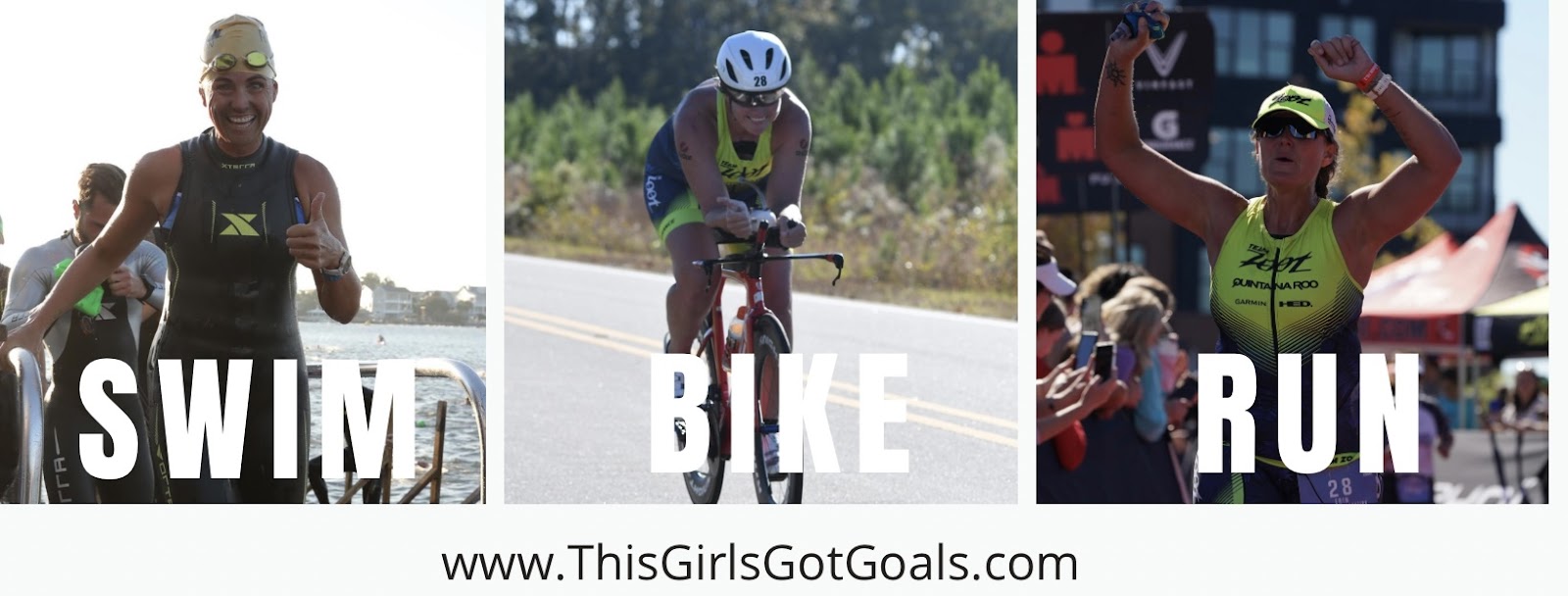Michigan Titanium Ultra Distance Aquabike – Race Report
My Goals for the Day
Going into the race, I had three goals:
Rockstar Goal: 7:20 (based on RaceX’s prediction of 7:21)
Super Happy Goal: 7:30
Happy Goal: Stick diligently to my hydration plan in the hot weather.
Only about eight people were registered for the Ultra Distance Aquabike, with three of us being female. I knew I’d be on the podium no matter what, but I wanted more than that — I wanted to win outright and maybe even land on the overall podium for men and women.
Last year at this race, my Di2 battery got unplugged before the bike start, leaving me stuck in one gear for the entire ride. This year, I wanted to see what I could really do on this course with all my gears working — and all that climbing.
Race Morning
Race morning went exactly to plan.
I woke up at 3:00 a.m., had breakfast (including coffee), stretched, and did some visualization. I was one of the first people on the first shuttle bus, arriving at transition early. That gave me plenty of time to get body marked, write my morning goal post, and get mentally ready for the day.
The sunrise was gorgeous — something that always makes me feel grateful and excited before a race. Transition setup went smoothly, and nothing unexpected came up.
Swim
The water was 82°F, so it was not wetsuit legal. I wore my swim skin for the first time since Puerto Rico in 2022. It still fit well and did exactly what I wanted.
The swim course was two loops with no exit in between. With such a small field, the water was uncrowded, sighting was easy, and I was able to swim straight without worrying about contact. It was a huge contrast to the crowded chaos of Lake Placid.
I PR’d at this distance with a 1:11:51 swim.
Coming into transition, I saw only one other Aquabike bike out — both male — so I knew I was the first female out of the water.
Swim Data:
- Distance:2.4 mile
Time: 1:11:51
Pace: 1:42/100 yds
Stroke Rate: 26 spm
Average HR: 140 bpm
Bike
Coming out of T1, I saw that the duathletes were being sent off right in front of me. The first half mile required some passing, but nothing major.
Unfortunately, the first two aid stations weren’t set up yet — no volunteers, no water, no supplies. My hydration plan was one bottle per hour, but my bottles hold about 50 ml less than my needs in this kind of heat. My bike can carry three bottles, which I started with, but I planned to pick up three more from my special needs bag at the halfway point. I also planned to grab water at each aid station to drink and pour over myself for cooling.
Without functioning aid stations early on, I couldn’t do that.
The course was hilly — not long climbs, but plenty of steep rollers, many back-to-back. I used momentum from descents to power partway up the next hill, then shifted into my small chain ring when needed. I used power to guide my shifting and heart rate to control my effort. My HR ran a little higher than planned in the heat, but I was still averaging around 20 mph on lap one.
Only one hill required my easiest gear and some zigzag riding. I never look at speed on my bike computer — I focus on what I can control: cadence, power, and effort.
Coming into the turnaround, I discovered that the special needs bags hadn’t been delivered yet. That meant I had no access to my second set of bottles. I had to pivot.
Nutrition Pivot
Thanks to the Triathlon Nutrition Academy, I know how to adjust on the fly. I had two backup gels (30g carbs each) and began relying on Gatorade from the aid stations. On lap two, I stopped at every aid station to get both Gatorade and water. FULL STOP because they did not have enough volunteers to do hand offs. It was extremely frustrating!
The complete stops — five in total — were momentum killers, especially on hills, and added time. My second loop was 15 minutes slower than my first.
Even so, I came into T2 as the first female in 7:03:49 — more than 16 minutes faster than my Rockstar goal and a huge PR for this distance.
Bike Data:
Distance:112 miles
Time: 5:48:02
Avg Speed: 19.3 mph
Avg Power: 146 W
Normalized Power: 162 W
Max Power: 446 W
Max Speed: 39.7 mph
Avg HR: 134 bpm
Max HR: 155 bpm
Elevation Gain: 5335 ft
Temperature Range: 72-115 (according to my Garmin...)
Finish & Reflection
As an Aquabiker, my race ended when I racked my bike. My athlete, Frank, who had just completed his longest duathlon ever, walked with me as we swapped race stories. Then I threw on flip-flops and crossed the finish line to collect my massive medal.
I was proud — proud of how I raced, proud of how I pivoted when my nutrition plan fell apart, and proud of the work I’ve done to improve my climbing ability.
Lessons Learned
Confirm special needs logistics before race day or be prepared to carry all needed nutrition from the start.
Aid stations are critical for more than just drinking — they can be a cooling strategy in the heat.
Even without regular hill access at home, intentional hill training and targeted sessions can pay off big.
Last year, stuck in one gear, I couldn’t have averaged over 19 mph with this much climbing. This year, with preparation, coaching, and confidence, I did.
Results
Next up: Aqua Bike Nationals Long Course in Kentucky — half the distance, but just as much climbing. I’m carrying this confidence with me into that race.






Comments
Post a Comment